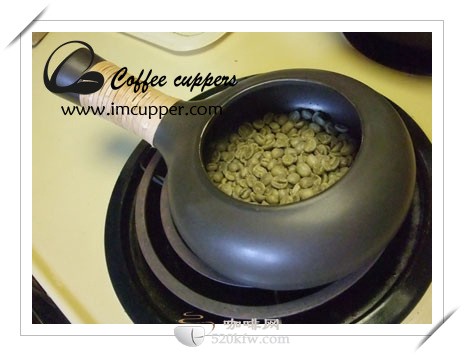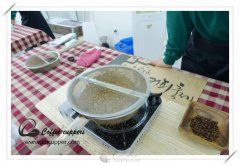Coffee beans Roasting technology Ceramic coffee roasters

Coffee roasting (coffee roasting) refers to the heating of raw beans to convert starch in raw beans into sugars and acids at high temperature, cellulose and other substances will be carbonized to varying degrees, water and carbon dioxide will be volatilized, protein will be converted into enzymes and fats, and the remaining substances will be combined to form an oil film on the surface of coffee beans, and in this process will produce sour, bitter, sweet and other flavors of coffee. The process by which raw beans are converted into dark brown beans by forming a mellow degree and hue. Because a variety of small changes in temperature, heat and other small changes in the baking process can change the taste of beans, different beans have different characteristics, and baking is a fast operation in a short time, so it is required to accurately budget the baking process and adjust it timely.
Ceramics help to keep the temperature constant, some people use a special "ceramic coffee roaster" to roast coffee beans, because of uniform heating, and easy to control the baking temperature.
The volume of this kind of roaster is small, and the amount of beans should be controlled below 100 grams. If medium heat is used, it takes about 8 minutes for the cold pot to start baking until dehydration is completed, the first explosion is about 15 minutes, and the second explosion is about 22 minutes.
Important Notice :
前街咖啡 FrontStreet Coffee has moved to new addredd:
FrontStreet Coffee Address: 315,Donghua East Road,GuangZhou
Tel:020 38364473
- Prev

Coffee bean baking technology net spoon baking process
Coffee roasting (coffee roasting) means that through heating raw beans, starch in raw beans is converted into sugars and acids at high temperature, substances such as cellulose will be carbonized to varying degrees, water and carbon dioxide will be volatilized, proteins will be converted into enzymes and fats, and the remaining substances will be combined to form an oil film on the surface of coffee beans, and in the process coffee acids will be formed.
- Next

Coffee bean baking technology hand popcorn pot
Coffee roasting (coffee roasting) means that through heating raw beans, starch in raw beans is converted into sugars and acids at high temperature, substances such as cellulose will be carbonized to varying degrees, water and carbon dioxide will be volatilized, proteins will be converted into enzymes and fats, and the remaining substances will be combined to form an oil film on the surface of coffee beans, and in the process coffee acids will be formed.
Related
- What is the meaning of lactic acid fermentation with coffee bean treatment?
- How to judge the state of foam by sound?
- How does the latte pull out the unicorn pattern? Come to get for a little trick to improve the flower pull!
- Will flower pulling affect the taste of the latte?
- Do you know the history of coffee?
- The difference between honey treatment and sun washing what is raisin honey treatment?
- What kind of milk can a novice use to make coffee foam to keep the foam longer? The correct method and skills of milking tutorial sharing
- Why do washed coffee beans taste sour? Flavor characteristics of washed Coffee
- Introduction to the skill of how to practice the size and height of water injection around the circle of hand-brewed coffee
- How do beginners practice coffee flower drawing from scratch?

